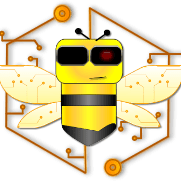For the past 25 years, Java, with more than 40 billions of Java Virtual Machines running around the world, has been the leading programming platform. Although, its beginnings are far from what we know right now for this programming language.
Once upon a time in a not that far away land dominated by a powerful language (C++), a group of engineers, called the Green Team, were trying to build a new programming language that could take down the reign of C++.
For that purpose, they built a platform-independent language with the idea of taking digital television to its next level. Unfortunately, this was a huge fail, the television at that moment was far from needing this kind of platform, the idea was just way ahead of its time.
Now the green team found themselves with this simple, platform-independent, interpreted solution, they called Oak, without a goal to fulfill in their hearts.

“But, wait a minute, we already have a simple, platform-independent, interpreted solution, we call Oak, we can do more than just digital television with it!!” said the members of the team.
Suddenly they got a new partner on the way, the Netscape browser, that offered support for this new platform, and so it began a long path of happiness for the green team guys and their Oak platform, which by the way was renamed as Java, after the coffee they used to sip every day.
The end
Of course, that wasn’t the end, Java is now everywhere: digital tv, moving cell phones, data centers, gaming platforms among many others. It was first released in 1995 and since then it has become the dominating programming platform.
Java Features
Java is both a platform and a programming language. The platform is composed of a Java Virtual Machine (JVM), that runs applications made using the Java programming language.
This Virtual Machine can be installed in almost every operating system and is in charge of interpreting the instructions of a program translating them into platform-dependent machine code.
The Java Programming language is a compiled and interpreted language. Every program written using Java is first compiled into an intermediate code called bytecode (the machine language of the Java Virtual Machine), then, when running the application in the JVM it’s interpreted to generate the machine code for the corresponding operating system.

As the JVM is available for many different Operating Systems, the same code we write (compiled into bytecode in a .class file) can run on every system that has the JVM installed.

This platform independence is one of the features that made Java one of the most used programming platforms, some other key concepts of Java are:
- Garbage Collector: The JVM comes with an automatic system for memory management, known as the garbage collector
- Object Oriented: Java is an Object-Oriented programming language
- Exception Handling: Java provides a system to manage exceptions
- EE Edition: The Enterprise Edition (JEE) is widely used to create web applications
The following is a short code written in Java that prints out the “Hello World” text.
public class MainClass {
public static void main(String[] args) {
System.out.println("Hello World!!!");
}
} To see how to run it, take a look to Hello World Java
C# Green Team James Gosling Java Java Platform Oak Object Oriented Programming




